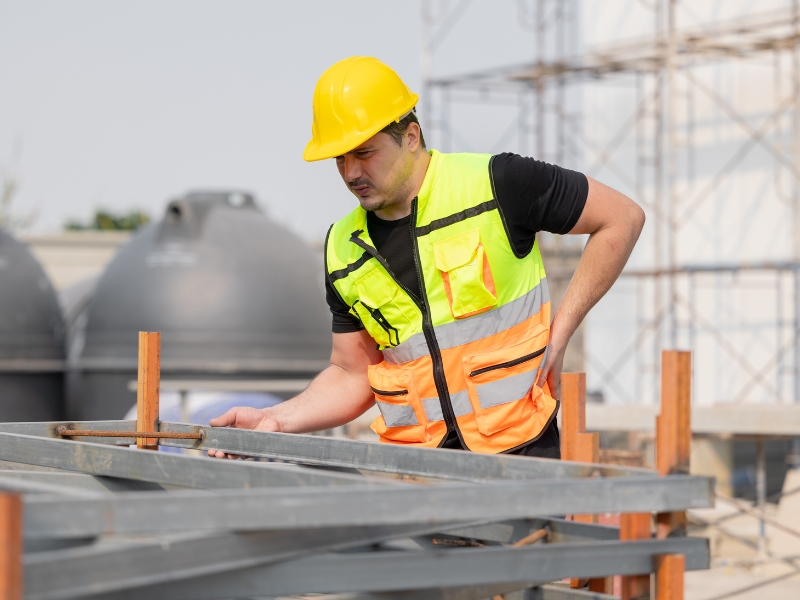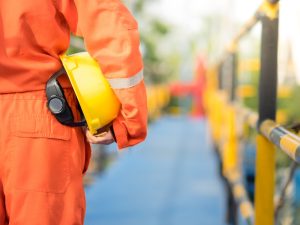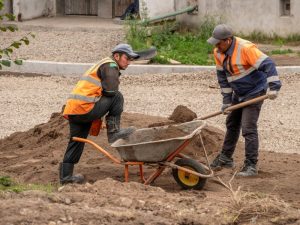In the construction industry, manual handling tasks are a daily reality. Workers frequently lift, carry, push, and pull materials and equipment. But how common are injuries resulting from these activities? This article explores the prevalence, risks, and prevention strategies associated with manual handling injuries in construction.
What are manual handling injuries, and why are they a concern in construction?
Manual handling injuries occur when physical tasks like lifting, carrying, or pushing lead to harm. In construction, these injuries are particularly concerning due to the nature of the work. Common manual handling injuries include:
- Musculoskeletal Disorders (MSDs): Injuries affecting muscles, nerves, and tendons.
- Strains and sprains: Overstretching or tearing of muscles and ligaments.
- Back injuries: Damage to the spine or surrounding muscles.
- Joint injuries: Harm to knees, shoulders, or elbows from repetitive movements.
These injuries can lead to significant downtime, impacting both workers’ health and project timelines.
How common are manual handling injuries in the construction industry?
Manual handling injuries are prevalent in construction. According to Safe Work Australia, the construction industry recorded 24 fatalities in a recent year, highlighting the sector’s inherent risks.
Additionally, the Australian Bureau of Statistics data indicates that 3.5% of workers experienced a work-related injury or illness in a given year. Lifting, pushing, pulling, or bending was the most common cause, accounting for 24% of these injuries.
What are the key risk factors for manual handling tasks on construction sites?
Several factors increase the risk of manual handling injuries in construction:
- Heavy Loads: Handling materials that are too heavy.
- Awkward Postures: Working in positions that strain the body.
- Repetitive Movements: Performing the same motions frequently.
- Environmental Hazards: Uneven surfaces or poor lighting, increasing accident risk.
- Time Pressures: Rushing tasks without proper technique.
These factors can lead to overexertion and injuries if not properly managed.
How can safety courses improve overall workplace safety in the construction industry?
Safety courses play a pivotal role in enhancing workplace safety by:
- Providing comprehensive training: Covering various aspects of workplace safety and hazard management.
- Certifying competence: Ensuring workers are qualified to perform tasks safely.
- Updating knowledge: Keeping workers informed about the latest safety protocols and regulations.
For instance, in Australia, construction workers must obtain a White Card through accredited training to ensure they understand essential safety requirements. Understanding why you need a White Card for construction work is essential for ensuring you meet safety requirements and are properly prepared to work on construction sites in Australia.
What should you do if you sustain a manual handling injury on the job?
If you experience a manual handling injury:
- Report Immediately: Inform your supervisor or safety officer about the injury.
- Seek Medical Attention: Consult a healthcare professional for assessment and treatment.
- Document the Incident: Record details of how and where the injury occurred.
- Follow Recovery Plans: Adhere to medical advice and rehabilitation programs.
- Review Work Practices: Assess and modify work methods to prevent future injuries.
Prompt action ensures proper care and helps in preventing similar incidents.
What are some effective techniques to reduce injury risks?
To prevent manual handling injuries, workers should follow these techniques:
- Use mechanical aids: Whenever possible, use trolleys, forklifts, or hoists to move heavy loads.
- Follow the proper lifting technique: Bend at the knees, keep the back straight, and lift with the legs.
- Keep loads close to the body: Holding items close minimises strain on the back and arms.
- Take breaks: Avoid fatigue by resting between tasks, especially when performing repetitive movements.
- Communicate with team members: Using team lifting to distribute the weight for heavy or awkward loads.
Additionally, the importance of site inductions for new construction workers cannot be overstated. They ensure that workers are familiar with safety protocols, potential hazards, and the necessary precautions before starting work on-site.
These small but effective adjustments and proper site inductions can prevent injuries and improve workplace safety.
What are the legal and safety standards for manual handling in construction?
In Australia, workplace safety is governed by laws and standards designed to protect workers. Key regulations include:
- Work Health and Safety (WHS) Act 2011: Establishes employer responsibilities for maintaining a safe work environment.
- Safe Work Australia’s Manual Handling Code of Practice: Provides guidance on reducing risks associated with manual handling tasks.
- National Standard for Manual Tasks (2010): Outlines ergonomic and risk assessment requirements for manual labour.
- Personal Protective Equipment (PPE) Guidelines: This policy mandates the use of safety gear, such as gloves, back supports, and steel-toed boots.
Employers must ensure compliance with these regulations to minimise the risk of injuries and legal liabilities.
How can businesses improve safety and reduce manual handling injuries?
Businesses can enhance safety by:
- Conducting risk assessments: Regularly evaluating tasks to identify potential hazards.
- Providing appropriate equipment: Ensuring the availability of tools that aid in safe manual handling.
- Implementing training programs: Offering regular safety training sessions for employees.
- Encouraging reporting: Fostering an environment where workers feel comfortable reporting hazards.
- Monitoring and reviewing: Continuously assess safety measures and make necessary adjustments.
- Promote ergonomics: Encouraging proper posture and movement to reduce strain.
- Provide hands-on practice: Allowing workers to apply safe techniques in real scenarios.
- Reinforce workplace policies: Ensuring adherence to safety regulations and best practices.
By equipping workers with the right knowledge and skills, businesses can significantly lower the risk of manual handling injuries.
Get Your White Card Certification with SafeZone Training
A White Card is essential for anyone working in construction in Australia. SafeZone Training offers industry-leading White Card courses in Bankstown, NSW, equipping workers with the knowledge needed to stay safe on-site.
Our trainers are experienced, approachable, and supportive. They are always ready to provide guidance when needed. Many of our students leave feeling confident in their skills and well-prepared for real-world construction environments.
With practical learning methods and expert instruction, we ensure you gain the right skills to handle manual tasks safely. Whether you’re starting a career in construction or looking to refresh your safety knowledge, our White Card course is the perfect first step.
Enrol in our White Card Training Program today and take the first step towards a safer construction career with SafeZone Training!
Frequently Asked Questions (FAQs)
- What is considered manual handling in construction?
Manual handling includes any task that involves lifting, carrying, pushing, pulling, or moving objects by hand or bodily force.
- Can manual handling injuries develop over time?
Yes. Many injuries result from repetitive strain and poor posture, developing gradually rather than from a single incident.
- What are the early signs of a manual handling injury?
Common signs include back pain, stiffness, joint discomfort, and reduced range of motion. If left untreated, these symptoms can worsen.
- Are there specific weight limits for lifting in construction?
While there is no strict legal limit, Safe Work Australia recommends that workers avoid lifting loads over 20-25kg without mechanical assistance or team lifting.
- How does fatigue increase the risk of manual handling injuries?
Tired workers are more prone to poor posture, mistakes, and muscle strain, which increases their risk of injury.
- What role does PPE play in preventing manual handling injuries?
Wearing gloves, back support belts, and steel-toed boots can provide additional protection and reduce strain.
- Can technology help reduce manual handling risks?
Yes. Exoskeletons, lifting robots, and ergonomic tools are emerging technologies that can assist workers and reduce physical strain.
- What should workers do if they feel discomfort during manual handling?
Stop the task immediately, report the issue to a supervisor, and seek medical advice if pain persists.
- How often should training be updated?
To ensure ongoing safety, it’s recommended that workers undergo refresher training annually or whenever new risks or techniques emerge. If you have any questions or need further details about the White Card course, don’t hesitate to contact SafeZone Training for White Card inquiries, and our team will be happy to assist you.



